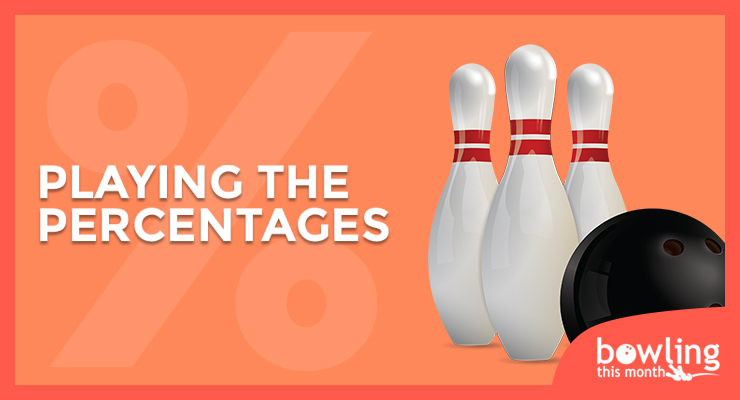Bowling is a game of percentages. A lot of the more tech-savvy bowlers among us keep track of their various percentages and stats using apps on their smartphones. Many veteran bowlers who don’t formally keep digital records of their stats often still have a very good idea of things such as their strike percentages. And, countless others have explored the computer scoring units and discovered that many of them keep track of various performance-related stats that can be viewed at the end of each bowling session.
Strikes are important in modern bowling. They’re so important, in fact, that spare shooting is often overlooked. How often do we hear teammates commiserating with one of their own when an easy spare is missed with the words, “That’s okay, spares are overrated anyway.” Personally, I don’t think spares are overrated. In fact, I don’t think that the modern game acknowledges great spare shooting for the simple reason that with so many strikes being thrown, leaves are often ugly splits or washouts resulting from a failure to adjust quickly enough.
There are many spare shooting systems that have been used effectively for many years. However, modern synthetic lanes, typical house oil patterns, and aggressive modern bowling balls have resulted in the need to make some alterations to these long standing systems. Most notably, the system wherein the bowler uses his strike target and makes lateral adjustments with his feet was never meant to be utilized with ten board moves at the arrows over the course of three games. It will work with three or four board total moves, but anything more than that begins to present problems for all but the very high rev rate players.
There are also certain leaves that have become much more difficult on modern conditions, most notably the 2/4/5, the 2/4/5/8, and the 6/10. Prior to the modern era, it was very unusual to see the 6 chopped off of the 10, or the 10 chopped off of the 6, but now it’s a weekly occurrence.
Starting with the single pins, let’s take a look at the most effective way of making sure that our spare conversion rate is as high as possible by utilizing methods that give us maximum conversion percentages.
To plastic, or not to plastic
This discussion has been going on for many years, and for many years I have cited the fact that 99% of the top elite bowlers in the world use plastic spare balls for their single pin spares. For league bowlers who bowl on typical house conditions, I have recommended using plastic balls at least for single 10 pins, single 6 ...
This article is only available to Bowling This Month subscribers. Click below to get instant access to this article and all of our other premium instructional content.
Subscribe to Bowling This Month
Already a Bowling This Month subscriber? Click here to log in.
